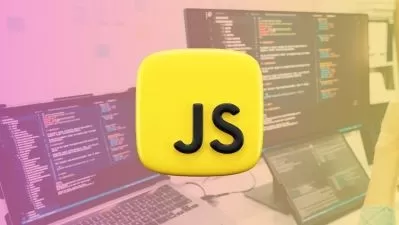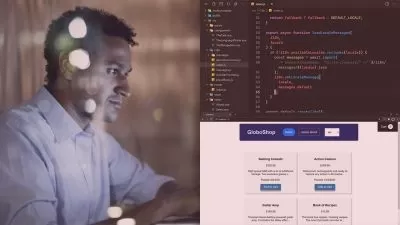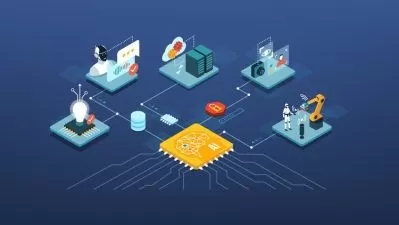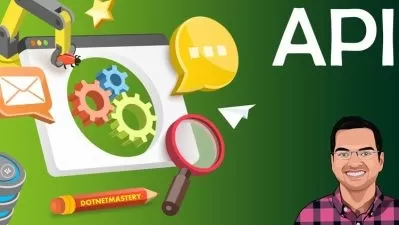Designing APIs with Swagger and OpenAPI, Video Edition
Focused View
11:40:07
28 View
001. Part 1 Describing APIs.mp4
01:16
002. Chapter 1. Introducing APIs and OpenAPI.mp4
09:29
003. Chapter 1. Where do OpenAPI definitions fit in.mp4
07:28
004. Chapter 1. When to use OpenAPI.mp4
06:06
005. Chapter 2. Getting set up to make API requests.mp4
09:56
006. Chapter 2. Adding a review to the FarmStall API.mp4
09:16
007. Chapter 3. Our first taste of OpenAPI definitions.mp4
12:32
008. Chapter 4. Using Swagger Editor to write OpenAPI definitions.mp4
07:57
009. Chapter 4. Writing in Swagger Editor.mp4
08:13
010. Chapter 5. Describing API responses.mp4
10:52
011. Chapter 5. Status codes.mp4
06:50
012. Chapter 5. Describing message, uuid, and userId.mp4
06:35
013. Chapter 6. Creating resources.mp4
11:32
014. Chapter 6. Adding examples to make try-it-out look pretty.mp4
10:07
015. Chapter 7. Adding authentication and authorization.mp4
11:21
016. Chapter 7. Adding the Authorization header.mp4
12:15
017. Chapter 8. Preparing and hosting API documentation.mp4
09:01
018. Chapter 8. Markdown basics.mp4
07:52
019. Chapter 8. Hosting our API documentation using Netlify.com and Swagger UI.mp4
09:20
020. Part 2 Design-first.mp4
01:22
021. Chapter 9. Designing a web application.mp4
10:28
022. Chapter 9. Domain modeling and APIs.mp4
10:56
023. Chapter 9. The Job and Dog models.mp4
06:35
024. Chapter 9. Mapping user stories.mp4
11:25
025. Chapter 10. Creating an API design using OpenAPI.mp4
07:17
026. Chapter 10. Creating the schemas.mp4
09:58
027. Chapter 10. The CRUD approach to API operations.mp4
09:46
028. Chapter 10. API operations for PetSitter.mp4
09:38
029. Chapter 10. JobApplication operations.mp4
07:18
030. Chapter 11. Building a change workflow around API design-first.mp4
11:14
031. Chapter 11. GitHub as our workflow engine.mp4
09:05
032. Chapter 11. Steps in our GitHub workflow.mp4
09:25
033. Chapter 12. Implementing frontend code and reacting to changes.mp4
09:26
034. Chapter 12. Adding multiple examples into your OpenAPI definition.mp4
08:13
035. Chapter 12. Choosing which mock data response to get from Prism.mp4
07:10
036. Chapter 13. Building a backend with Node.js and Swagger Codegen.mp4
09:43
037. Chapter 13. Investigating the structure.mp4
09:05
038. Chapter 13. Tagging API operations.mp4
10:02
039. Chapter 13. Testing input validation.mp4
09:30
040. Chapter 13. Configuring Mongoose in the project.mp4
11:24
041. Chapter 14. Integrating and releasing the web application.mp4
10:55
042. Chapter 14. Implementing authorization.mp4
11:05
043. Chapter 14. Managing repositories.mp4
10:15
044. Chapter 14. Server setup.mp4
06:46
045. Part 3 Extending APIs.mp4
01:04
046. Chapter 15. Designing the next API iteration.mp4
09:18
047. Chapter 15. Preparing for new features.mp4
07:31
048. Chapter 15. Reviewing user stories.mp4
09:36
049. Chapter 15. Improving the developer experience.mp4
07:05
050. Chapter 15. Input validation.mp4
06:43
051. Chapter 16. Designing schemas with composition in OpenAPI.mp4
07:25
052. Chapter 16. Polymorphism and inheritance in domain models.mp4
08:31
053. Chapter 16. Polymorphism and inheritance in OpenAPI.mp4
09:01
054. Chapter 16. Adding discriminators in OpenAPI.mp4
08:07
055. Chapter 17. Scaling collection endpoints with filters and pagination.mp4
09:09
056. Chapter 17. Designing filters.mp4
10:06
057. Chapter 17. Handling nested schemas.mp4
07:01
058. Chapter 17. Finding filter fields.mp4
07:28
059. Chapter 17. Adding filters to OpenAPI.mp4
07:59
060. Chapter 17. Offset-based and page-based pagination.mp4
10:41
061. Chapter 17. Pagination for PetSitter.mp4
09:21
062. Chapter 17. Multifield sorting.mp4
10:56
063. Chapter 18. Supporting the unhappy path Error handling with problem+json.mp4
08:14
064. Chapter 18. Finding unhappy paths.mp4
06:11
065. Chapter 18. Requirements for error responses.mp4
11:22
066. Chapter 18. The problem+json format.mp4
11:03
067. Chapter 18. Error-handling guidance.mp4
09:27
068. Chapter 19. Improving input validation with advanced JSON Schema.mp4
10:08
069. Chapter 19. Enforcing number constraints.mp4
10:26
070. Chapter 19. Updating PetSitter schemas.mp4
10:50
071. Chapter 20. Versioning an API and handling breaking changes.mp4
08:34
072. Chapter 20. Multiple API versions.mp4
06:53
073. Chapter 20. Using media types to version operations.mp4
09:24
074. Chapter 21. The API prerelease checklist.mp4
08:29
075. Chapter 21. End-to-end testing.mp4
08:17
076. Chapter 21. Getting your API consistent.mp4
10:20
077. Chapter 21. Getting a change strategy.mp4
09:28
078. Appendix A. Swagger 2.0, OpenAPI 3.0, and OpenAPI 3.1.mp4
10:22
079. Appendix A. Components and structure.mp4
07:38
More details
User Reviews
Rating
average 0
Focused display
Category

Manning Publications
View courses Manning PublicationsManning Publications is an American publisher specializing in content relating to computers. Manning mainly publishes textbooks but also release videos and projects for professionals within the computing world.
- language english
- Training sessions 79
- duration 11:40:07
- Release Date 2024/01/28














